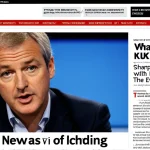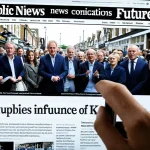Defining Moments in UK Women’s Fashion History
Exploring how styles evolved with society
The UK women’s fashion history unfolds across distinct historical fashion periods, each mirroring cultural shifts and societal change. The Victorian era established rigid, ornate silhouettes with corseted waists and voluminous skirts, reflecting strict social norms. Transitioning to the Edwardian period, women embraced softer lines and lighter fabrics, signaling subtle shifts toward modernity.
Also to see : How Can UK Women Define Their Unique Style in Fashion?
The 1920s marked a radical break: flapper dresses and shorter hemlines epitomized newfound freedom post-WWI. This epoch in the British fashion timeline captured women’s changing roles and social liberation. Postwar years saw fabric rationing but also innovation—women balanced practicality with elegance, signaling resilience during recovery.
The Swinging Sixties epitomized youthful rebellion and bold styles, with mod influences and innovative designs dominating the UK fashion scene. Finally, the 1980s introduced power dressing with structured shoulders and vibrant colors, reflecting women’s expanding presence in the workforce and society.
Also to discover : What Are the Latest UK Women’s Fashion Trends for a Stylish Wardrobe Update?
Global events—from world wars to economic shifts—deeply impacted women’s fashion in the UK. These moments illustrate how changing times and culture shape what women wore, marking pivotal points in the British fashion timeline.
Influential British Designers and Fashion Icons
British fashion designers have long been at the forefront of innovation, shaping global style with distinctive flair. Mary Quant, often credited with popularizing the miniskirt, revolutionized 1960s fashion by introducing youthful, bold looks that redefined femininity. Vivienne Westwood brought punk aesthetics into mainstream culture, challenging norms and inspiring rebellious yet elegant design. Alexander McQueen’s dramatic and theatrical creations combined craftsmanship with emotional storytelling, influencing both runway trends and high fashion.
UK fashion icons have also played a pivotal role in setting trends. The Queen’s timeless elegance established a model for classic, dignified femininity. Princess Diana’s style evolution made her a symbol of approachability and modern grace, blending royalty with relatability. Twiggy, the face of Swinging Sixties London, became the embodiment of youth culture through her androgynous look and vibrant persona.
Together, these British fashion designers and UK fashion icons not only created trends but reshaped societal perceptions of femininity, making profound cultural statements through their style and innovations. Their enduring influence continues to inspire contemporary fashion worldwide.
Societal Shifts and Their Reflection in Women’s Fashion
Fashion has long acted as social commentary, mirroring the evolution of women’s roles and freedoms in society. The rise of women’s rights movements significantly influenced clothing choices, breaking away from restrictive norms towards more practical and expressive styles. This shift wasn’t just about comfort; it symbolized empowerment and autonomy.
In the UK, growing awareness and acceptance of diverse identities have become increasingly visible in the fashion scene. Designers and consumers alike embrace inclusivity, reflecting broader social change and fostering representation. This visibility challenges traditional standards and promotes individuality, aligning fashion with ongoing social progress.
Moreover, fashion highlights the transformation in women’s societal roles. From suffragettes adopting simpler attire to modern women blending professionalism with creativity, clothing tells a story of expanding liberties. Each style evolution corresponds with milestones in rights, freedom, and identity, reinforcing how fashion both shapes and reflects cultural change.
Ultimately, women’s fashion serves as a dynamic canvas where social change and fashion converge, revealing shifts in societal values and aspirations with every fabric and cut.
Visual Trends: Patterns, Fabrics, and Silhouettes Across the Decades
Exploring fashion styles through the decades reveals how British fashion patterns evolved alongside societal changes. In the early 20th century, floral and paisley patterns dominated, reflecting a romantic, handcrafted aesthetic. Wool and tweed fabrics were staples, emblematic of practical British style.
The 1960s introduced bold geometric prints and psychedelic motifs, mirroring the era’s rebellious spirit. Silhouettes shifted dramatically with the rise of the miniskirt—a daring, youthful statement that challenged traditional British dress codes. This period saw a mix of mod and hippie influences, merging patterns and textures innovatively.
In the 1980s, power dressing demanded sharp, structured silhouettes like broad-shouldered suits with shoulder pads, conveying confidence and ambition. Fabrics such as satin and velvet were popular for their luxurious visual appeal. British designers embraced polka dots and stripes in new ways, blending tradition with modern flair.
Each decade’s distinctive changing silhouettes reflect cultural shifts. From corsets shaping the Victorian era to flowing bohemian dresses, and then to sleek, gender-neutral cuts, British fashion patterns tell a story of adaptation and creativity. Understanding these visual trends offers insights into both style and society across time.
Lasting Influence: How Historical UK Styles Shape Modern Women’s Fashion
The UK fashion legacy profoundly influences today’s women’s style, blending vintage influences with contemporary trends. Historical UK styles often provide the foundation for modern designers and high street brands, who draw on classic British aesthetics to create fresh yet familiar apparel.
A key aspect of the impact on modern style is the integration of vintage motifs such as tartan patterns, tailored blazers, and lace details. These remain staples in British women’s wardrobes, showing the enduring appeal of heritage designs. For example, the iconic trench coat traces back to military uniforms from the early 20th century, now a timeless piece worn across generations.
High street and designer labels actively revive and reinterpret historical looks. Designers might combine Victorian-inspired silhouettes with modern fabrics for a unique fusion or introduce classic British prints in everyday collections. This blend maintains a strong connection to UK fashion heritage while meeting contemporary tastes.
The persistence of these vintage influences is evident in daily wear, where classic pieces like pencil skirts or brogues remain popular choices. This consistent presence highlights how the UK fashion legacy continually shapes and enriches women’s modern style.
Modern British Fashion: Global Impact and Future Directions
British fashion today stands as a dynamic force within the global fashion industry. The UK’s unique blend of heritage and innovation fuels its international influence, shaping trends far beyond its borders. London Fashion Week, one of the “Big Four” fashion events, plays a pivotal role in showcasing emerging UK designers who bring fresh perspectives and bold creativity to women’s fashion. This event not only highlights established names but also nurtures new talent, reinforcing Britain’s reputation as a trendsetter.
British fashion today reflects an ongoing dialogue between tradition and contemporary style. Designers often draw inspiration from the rich history of British tailoring and street culture, integrating these elements into modern collections. The result is an evolving aesthetic that appeals globally, resonating with diverse audiences.
Looking forward, anticipated trends in British fashion continue to embrace sustainability, technological innovation, and inclusivity. The industry’s commitment to ethical production and forward-thinking design suggests that the UK’s influence will grow, adapting seamlessly to changing consumer values while maintaining its distinctive character. This balance ensures that British fashion today remains a relevant and exciting force in the international fashion industry.




